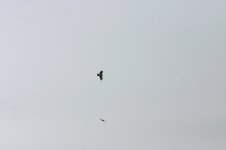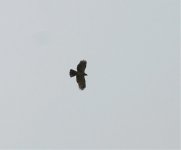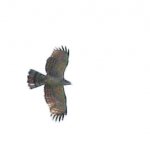MSA
I may be relaxed but I'm not drunk....
Sifting through my Israel pics from this March for a winter CHOG meeting, found this pic of a distant raptor. No scope, and couldn't get to grips with ID through bins, so I took a record shot with the 400mm. Second pic is cropped version. I believe the accompanying raptor in pic 1 is a Steppe Buzzard, though maybe a Black Kite (didn't keep a note - but doubt it's of much use as the birds could have been quite a way apart). Opinions and reasons would be appreciated, as I don't think it's as straightforward as it may appear at first glance...







